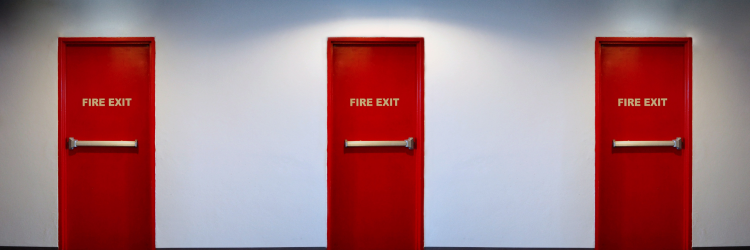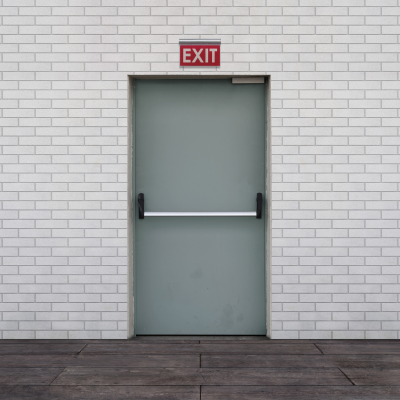What is a Panic Bar?
Panic bars, also known as crash bars, push bars, or exit devices, are a crucial component in modern building safety. These devices allow for quick and efficient evacuation during emergencies. This article delves into the purpose, functionality, and some intriguing aspects of panic bars.
A panic bar is a type of door-opening mechanism found on emergency exit doors. It is a horizontal bar fixed across the width of the door, which, when pushed, unlatches the door allowing for swift exit. This design ensures that in the event of an emergency, such as a fire or other threat, individuals can exit the building quickly and safely.

Why are Panic Bars Used?
- Safety in Emergencies: The primary purpose of panic bars is to ensure a safe and rapid evacuation during emergencies. They allow doors to be opened easily under pressure, preventing bottlenecks and trampling.
- Compliance with Safety Regulations: Many building codes and safety regulations mandate the installation of panic bars on emergency exits to ensure public safety.
- Prevention of Unauthorized Entry: While allowing exit from the inside, panic bars can restrict entry from the outside, adding a layer of security.
Interesting Facts About Panic Bars
- Historical Development: The invention of the panic bar is attributed to Carl Prinzler and Vonnegut in response to the tragic 1903 Iroquois Theatre fire in Chicago, which claimed over 600 lives.
- Variety of Designs: Panic bars come in various designs, including crossbar, touchpad, and recessed versions, each catering to different aesthetic and functional requirements.
- Integration with Alarm Systems: Some panic bars are equipped with alarm systems that activate when the bar is pressed, alerting authorities during unauthorized exits.
- Durability and Maintenance: Made to withstand heavy use, panic bars are designed for durability but require regular maintenance to ensure they function correctly in emergencies.
Q&A About Panic Bars / Exit Devices

Are panic bars required on all exit doors? A1: Not all exit doors require panic bars. Their necessity depends on the building’s occupancy type, capacity, and local building codes.
Can panic bars be installed on glass doors? A2: Yes, there are specific types of panic bars designed for glass doors, ensuring safety without compromising the door’s integrity.
How do panic bars enhance security? A3: Panic bars allow exit without hindrance from the inside while restricting access from the outside, thereby enhancing security against unauthorized entry.
Are there different types of panic bars for commercial and residential use? A4: Yes, commercial panic bars are generally more robust and may have integrated alarm systems, while residential ones are simpler and more focused on ease of use.
Can panic bars be integrated with electronic access control systems? A5: Yes, modern panic bars can be integrated with electronic access control systems for enhanced security and monitoring.
Panic bars are an essential safety feature in modern buildings. Their simple yet effective design ensures quick and safe evacuation during emergencies, while also complying with safety regulations and enhancing building security. Understanding their functionality and importance is crucial for building owners, architects, and the general public.
Types of Panic Bars and Their Average Costs

Panic bars come in various types, each designed to meet specific requirements of different building environments. The cost of these devices varies based on their type, features, and the complexity of installation. Below, we explore the common types of panic bars and their average costs for parts and installation.
Touchpad Panic Bars
- Description: These feature a flat, push-pad mechanism and are commonly used in modern buildings. They are user-friendly and have a sleek design.
- Average Cost: The cost for touchpad panic bars ranges from $200 to $600 for the hardware. Installation costs can add an additional $100 to $250, depending on the complexity of the door setup.
Crossbar Panic Bars
- Description: Characterized by a horizontal bar that extends across the door, crossbar panic bars offer a traditional look and are known for their durability.
- Average Cost: The price for crossbar models typically ranges from $300 to $800. Installation can cost between $150 and $300, influenced by the door’s material and the bar’s design.
Recessed Panic Bars
- Description: These are integrated into the door, creating a flush surface. They are ideal for doors where protruding hardware is not desirable for aesthetic or space reasons.
- Average Cost: Recessed panic bars are generally more expensive, ranging from $400 to $1,000. Installation costs can be higher, around $200 to $350, due to the additional work required to recess the bar into the door.
Alarm-Equipped Panic Bars
- Description: These panic bars come with integrated alarms that trigger when the bar is used, ideal for security-sensitive areas.
- Average Cost: The cost for alarm-equipped panic bars can range from $250 to $700. Installation might add $150 to $300 to the total cost, depending on the complexity of integrating the alarm system.
Vertical Rod Panic Bars
- Description: These bars are equipped with rods that extend vertically along the door, suitable for double doors or where additional latching is required.
- Average Cost: Vertical rod panic bars can cost between $300 and $900. Installation costs, which can be more complex due to the vertical rods, range from $200 to $400.
Factors Influencing Cost
- Brand and Quality: Higher-end brands and superior quality materials can significantly increase the cost.
- Customization: Custom sizes or finishes can add to the overall cost.
- Local Labor Rates: Panic Bar Installation costs vary based on local labor rates and the time required for installation.
- Door Type: Metal, wood, or glass doors each have different installation requirements that can affect the cost.


